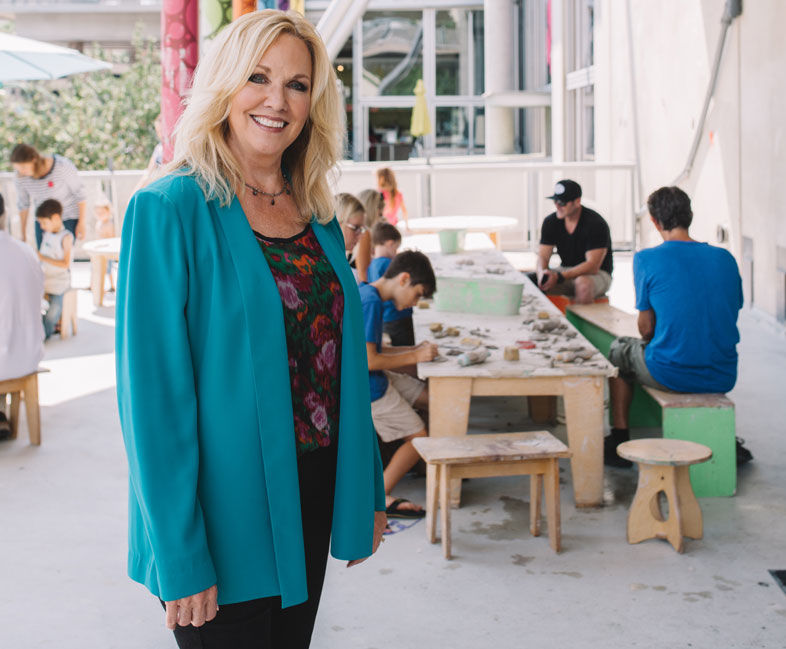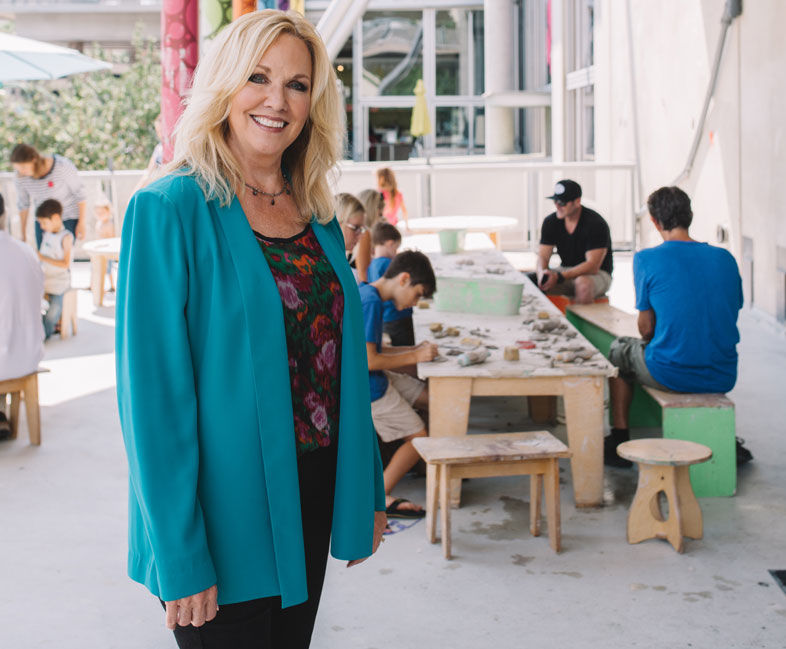Erin Meanley Glenny: What are some of the secrets to your success?
Judy Forrester: I’ve always been willing to take a job nobody else wanted—identifying opportunities that seem super daunting or circumstances that weren’t really attractive, accepting that, and just putting my head down. I was fortunate I got hired at the chamber of commerce fairly early in my career and started working in membership, and then they had a position open in welfare-to-work. I was trying to help connect chamber members to welfare recipients, which wasn’t a very popular thing.
EMG: So the unpopular job is like a proving ground.
JF: It’s also understanding that you can’t do it by yourself. For me, it was gathering groups of people who believed in what we were doing and would come alongside us to make it happen. When I was at the Red Cross, I had great mentors—Jerry Sanders and Kimberley Layton—and the people involved with helping put it back together. When I started the San Diego County Medical Society Foundation, which is now Champions for Health, it was gathering a group of people that believed in the mission. I spent a year at the USO, and then came to The New Children’s Museum. It’s amazing what we can accomplish when no one cares who gets the credit. The other thing is, don’t talk about your successes; let your outcomes talk about your successes.
EMG: Where did you go to school?
JF: I could never afford to go to college. I was blessed by the community college system here. When I went to Mesa, I paid $7 a semester—which included my parking and my insurance, because the college was free. I’m a huge supporter of that. I went my first 70 units at Mesa and then had automatic acceptance at San Diego State business school because of my grades.
EMG: What did you do after college?
JF: My first years of working were really my proving and training ground. I worked commission sales in the giftware industry. And I got recruited and started doing mortgage lending for Great Western Bank, now Chase. Again, it was straight commission. If I didn’t sell anything, I didn’t eat. When I started at the chamber, I got a stipend as a straight commission, so if I didn’t sell anything, I didn’t eat. You learn really fast to do what’s important, and don’t let a lot of peripheral stuff take all your time.
EMG: Those are good lessons to learn early on.
JF: Before college, I was one of the first waitresses for BJ’s pizza when they opened in La Jolla. I also worked in the photo department at Sav-On drugstore.
EMG: A lot of women in high positions like you make five- and 10-year plans. Did you ever make one while at Sav-On?
JF: No, I was trying to buy my groceries. My dad was ill, so he didn’t work a lot. My mom eventually got a high school diploma, but my dad didn’t get out of seventh grade because his dad passed away and he had to support his family of six. So college was not in my social structure at all. I came from the mindset that you did what you needed to pay your bills, as long as it was ethical and legal. I had a great family; we just didn’t have any money. I grabbed opportunities that were presented to me. [Board Advisor] Mitch Mitchell reached out to me and said, “I need you at the museum.” I didn’t know anything about arts and culture—I do now—but I knew how to run a business.
EMG: You started at The New Children’s Museum as a consultant in December 2015. What has changed at the museum since then?
JF: I’ve helped change the business model so there’s funding to do all the cool arts stuff. We have a wonderful creative team. Our attendance is up 40 percent, and the museum’s not hot in the summertime anymore. The museum is working as a functional business now, and the arts people have the resources they need.
EMG: We creatives need people like you.
JF: The danger of nonprofits is people get so wrapped up in the mission—which is important, but if you don’t have a business structure that will support the mission, you can’t carry it out. People forget that and they don’t backfill those business leaders who make the organization thrive.
EMG: Can you talk a little bit about striking the work-life balance?
JF: I’m still learning to pick and choose what’s going to move the needle. That’s the biggest thing for being a working mom that has a disabled husband, a dad with Alzheimer’s, and three children. My younger self as a mom was juggling a lot—foster care, a foster child I was adopting, my dad lived with me—and somebody said to me, “Don’t let perfection get in the way of good enough.” I was offended by that because I’ve always striven for perfection, as a mom, as a wife, and at work. But then as I started getting older I realized how frazzled I was. I learned to understand what I need to do perfectly, what I can get away with not doing perfectly, and what I don’t need to do at all.

Celebrating Women: A Q&A with The New Children’s Museum CEO Judy Forrester
Photo by Joe Wilson




